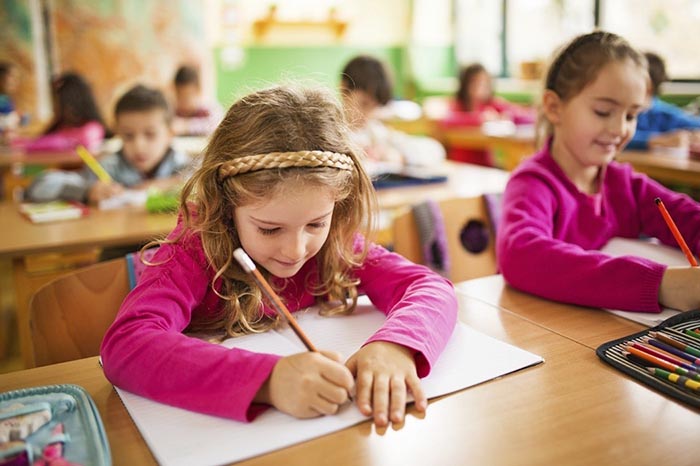
In the current school year, districts with more remote-learning time lost 1.2% more students than those offering the most in-person instruction.
From K-12 Dive
By Naaz Modan
May 2, 2022
Despite many school districts stressing the importance of staying remote during the height of the pandemic, data shows districts doing the opposite have fared better with both enrollment declines and student achievement.
Overall, 1,268,000 students have left public schools entirely since the pandemic began, according to data collected by the American Enterprise Institute, a right-leaning think tank, from districts with at least two schools in 46 states. Schools in Rhode Island, Montana, Tennessee and Kentucky were not included in the count.
However, not all public schools experienced enrollment declines evenly.
Those more starkly impacted include schools with longer remote learning periods and those in counties that voted for President Joe Biden in the 2020 elections.
“I think that at least the ones [districts] for Biden were more urban, larger, bluer and by definition those places tend to have more general defensive COVID cultural responses — they masked more, they shut down longer,” said Nat Malkus, senior fellow and deputy director of education policy at AEI. “These are all manifestations of that underlying group COVID culture.”
Those district decisions — and families’ resulting decisions to pull students from public schools — had big implications for schools, Malkus said.
In the current school year, districts that had more remote-learning time lost 1.2% more students than did districts offering the most in-person instruction. That makes the total enrollment slide for remote districts a 4.4% decline — or one in 22 students.
In contrast, districts offering the most in-person instruction actually saw an enrollment rebound of almost 1% this school year after a dip the year before. That makes the total decline in enrollment for schools with the most in-person learning 1 in 93 students.
“It’s a fairly simple lesson that these decisions have consequences,” Malkus added.
Major fallout for public schools
Experts predicted enrollment dips would bounce back once schools reopened, especially considering that the steepest declines were in kindergarten. That’s when parents were presumably redshirting their children, or delaying the start of their schooling by a year.
Yet other grades contributing to the declines also matter, Malkus pointed out.
If students in grades other than kindergarten switched schools, families may not decide to return despite districts reopening. “The roots of these decisions start to grow deep,” Malkus said. “Well, people will start to say these kids are in school and we don’t want to move them again.”
Total enrollment in independent private schools saw a net growth of 1.7% between 2020 and 2022, according to the National Association of Independent Schools.
Enrollment in Catholic schools, which make up the bulk of the nation’s private schools, enjoyed a rebound in enrollment this year, with an increase of 3.8%, according to the National Catholic Educational Association.
Catholic schools were open for 5-day, in-person instruction and hybrid within three weeks of the shutdown in March 2020, according to Margaret Kaplow, spokesperson for NCEA. Those who transferred to Catholic schools were most likely to be White and wealthy, according to a survey of transfer students’ parents between December 2020 and January 2021.
Catholic school enrollment increases were also mostly concentrated in the grades where public schools saw the largest declines: pre-K, kindergarten and elementary.
Parents of transfer students who said they would not have enrolled their children in Catholic schools had the pandemic not happened were most likely to have transferred them from a public school, according to the survey. Half of the public school transfer parents said they were unsure, or would not have enrolled their child in private school in absence of the pandemic.
If students don’t return to public schools, that will have major implications for districts, Malkus said. “These declines represent hundreds of thousands to millions of dollars in state and federal revenue, and school districts do not easily shed that kind of money.”
School districts should ‘get back to normal’
The loss of that money could impact the same districts that have the starkest academic achievement declines, considering additional data released last week confirmed learning lags were also larger in schools with less in-person instruction.
“We know from research that students who were in remote learning longer learned less. Parents clearly knew it too and acted in their students’ interests,” said Robin Lake, director of the Center on Reinventing Public Education, in an email. “Parents wanted options and choices and many districts did not offer much in the way of flexibility.”
And while hold-harmless policies are in play in some places and federal leaders continually point to historic federal aid relief, “how those things play out is questionable,” Malkus said. Hold-harmless policies were enacted by many states to cushion districts from enrollment or attendance changes, which would have impacted funding during pandemic declines. “It’s going to be very difficult, because those hold harmless provisions aren’t uniform.”
Overall, this suggests school districts making decisions now around learning modes and health and safety precautions should heed the data — not only to bring students back to public schools, but also to better serve those still enrolled and benefiting from in-person class time.
“I’m not saying let’s throw caution to the wind, but I am saying that school districts should get back to normal because that’s more likely to bring students back faster,” Malkus said. “For school district leaders grappling with decisions, these effects that you see across the country should inform what you do in the short term.”
Photo: JSTOR Daily
Read this and other stories at K-12 Dive

